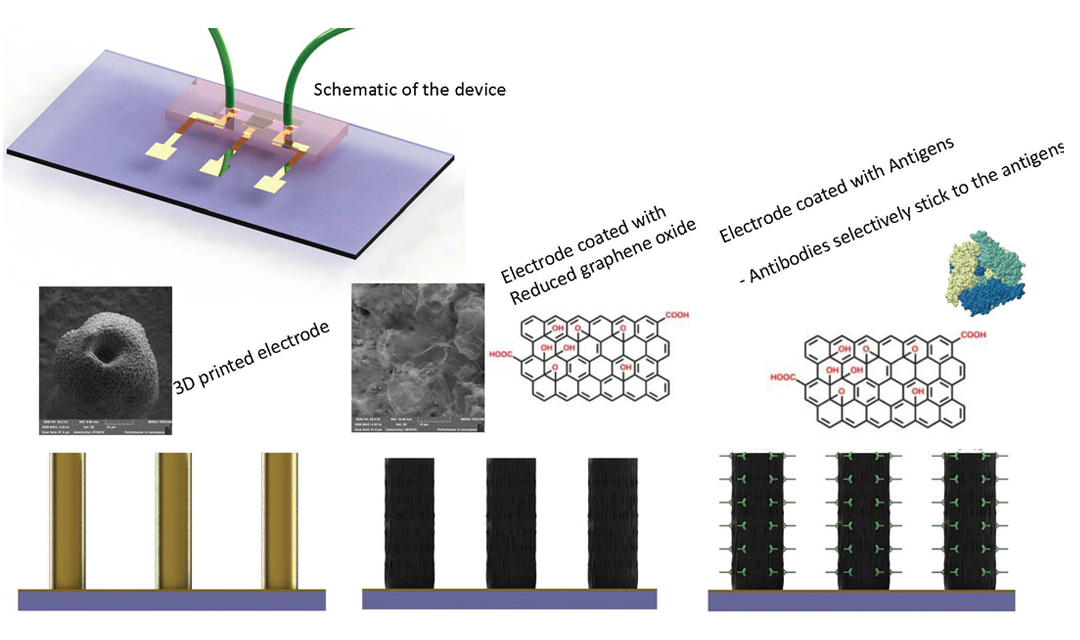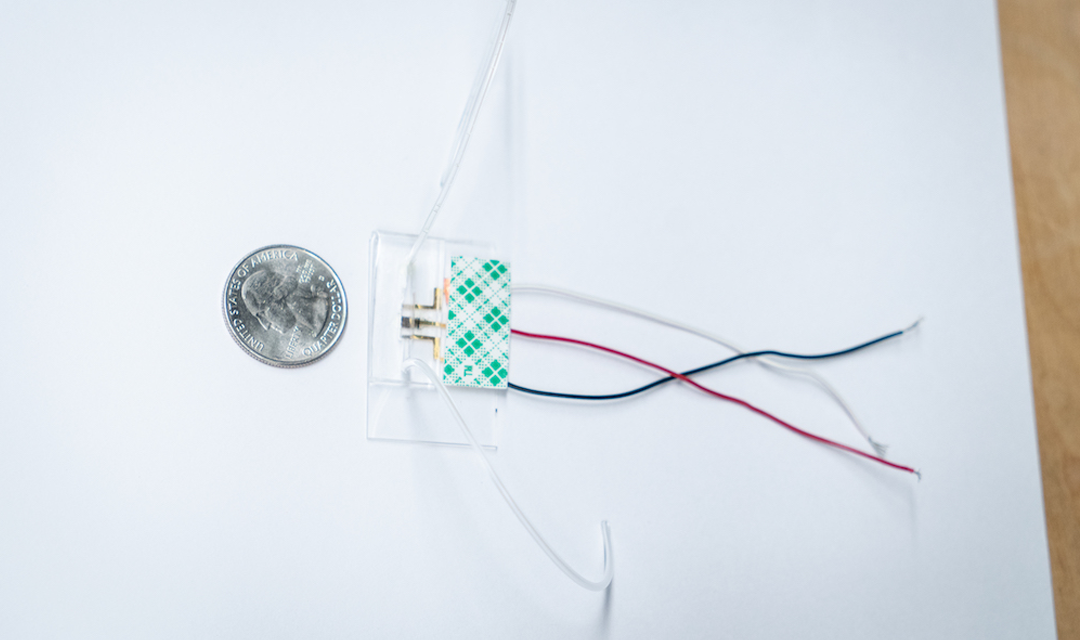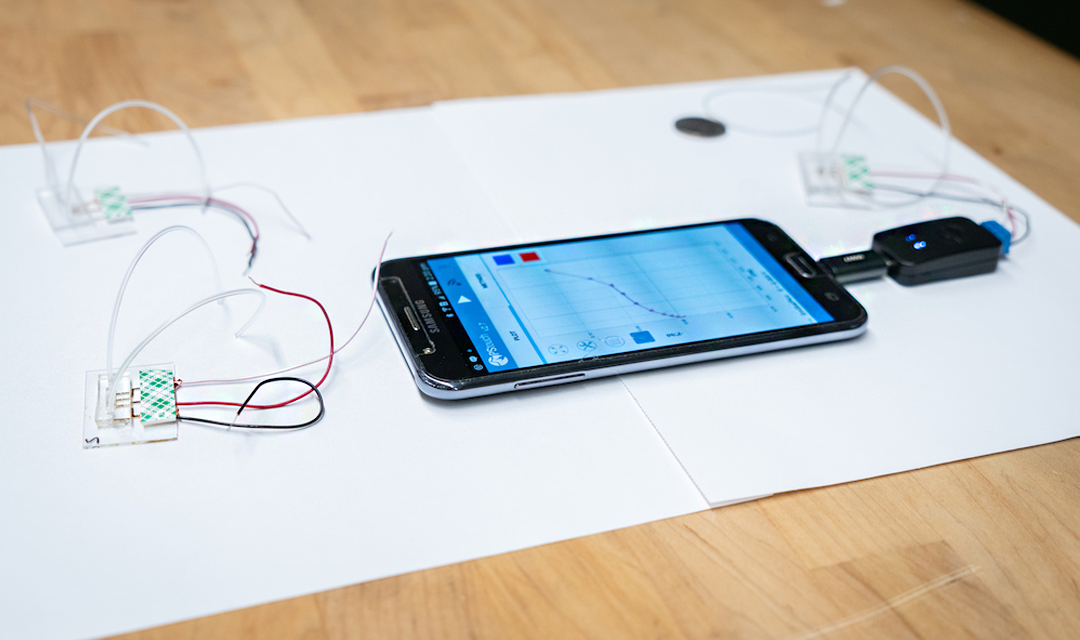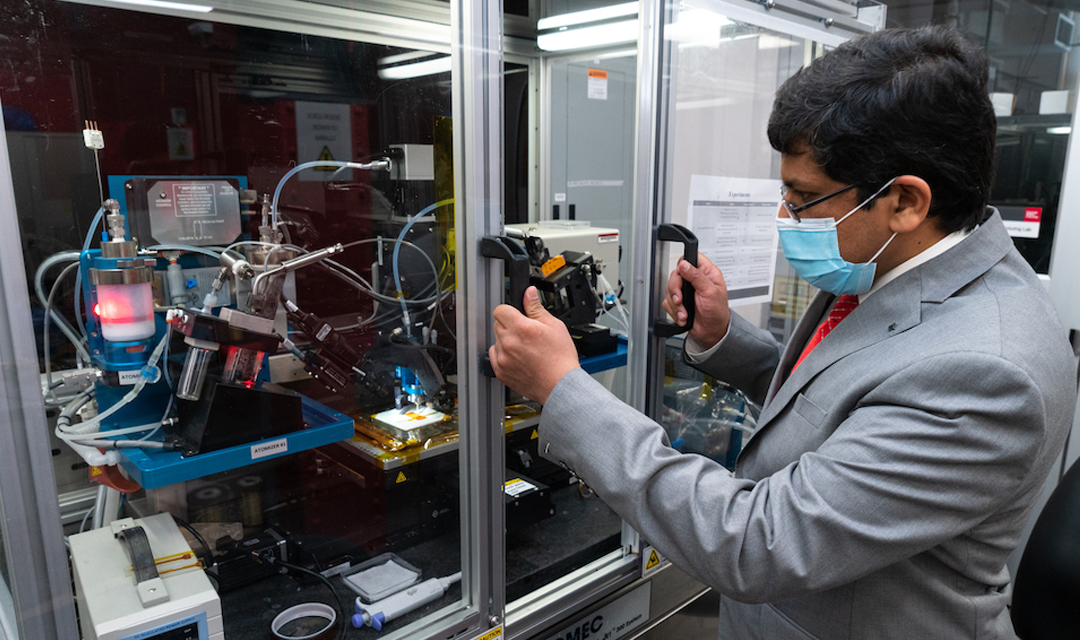Imagine a 10-second COVID-19 antibody test—we’re on our way
Carnegie Mellon University researchers reveal fastest known COVID-19 antibody test with high sensitivity due to a unique, 3D printing technology and an electrochemical reaction.
Researchers at Carnegie Mellon University, in collaboration with the University of Pittsburgh and UPMC, have developed one of the fastest known COVID-19 antibody tests. The test results are available in 10 - 15 seconds and detect the presence of two of the antibodies to SARS-CoV-2, the virus responsible for COVID-19. Such a quick and effective test could be a game-changer for controlling the spread of the pandemic.

Source: College of Engineering
Antibodies stick to antigens on the 3D printed electrodes that are coated with reduced graphene oxide.
The breakthrough test would require a very small drop of blood from a fingertip (less than five microliters) to identify two antibodies of the virus: spike S1 protein and receptor binding domain (RBD). It can detect antibody concentrations at an extremely low level, one picomolar (0.15 nanograms per milliliter), through an electrochemical reaction within a handheld microfluidic device. Results are sent almost immediately to a simple interface on a smart phone. The device can be cleaned (i.e. regenerated) within one minute using a special chemistry discovered by the researchers that allows multiple, successive readings from the same device.

Source: College of Engineering
The device is about the size of a quarter.
A simple yet elegant additive manufacturing technology called aerosol jet 3D printing is responsible for the efficiency and accuracy of this testing device. Tiny, inexpensive gold micropillar electrodes are printed at nanoscale using aerosol droplets that are thermally sintered together. This causes a rough, irregular surface that provides increased surface area of the micropillars and an enhanced electrochemical reaction, where antibodies can latch on to antigens coated on the electrode. The specific geometry allows the micropillars to load more proteins for detection, resulting in very accurate, quick results.
The test has a very low error rate since the binding reaction between the antibody and antigen used in the device is highly selective. This natural design was exploited by the researchers to their advantage.
This sensing platform can also be used to detect other infectious diseases, potentially affecting the course of pandemics.
Rahul Panat, Associate Professor, MechE
The device, which has a provisional patent, is inexpensive to make (in the tens of dollars). And, the manufacturing capabilities already exist.

Source: College of Engineering
An interface with a mobile phone provides the results of the antibody test.
“My research team was working on 3D printed high-performance sensors to detect dopamine, a chemical in brain, when we realized that we could adapt our work for COVID-19 testing,” said Rahul Panat, an associate professor of mechanical engineering at Carnegie Mellon who uses specialized additive manufacturing techniques for research ranging from brain-computer interfaces to biomonitoring devices. “We shifted our research to apply our expertise to combatting this devastating pandemic.”

Source: College of Engineering
Rahul Panat at the 3D aerosol jet printer.
Knowing the work would require a multidisciplinary approach, Panat collaborated with Shou-Jiang Gao, leader of the Cancer Virology Program at UPMC Hillman Cancer Center and professor of microbiology and molecular genetics at the University of Pittsburgh. Azahar Ali, a postdoctoral researcher in Panat’s Advanced Manufacturing and Materials Lab, was the lead author of the study.
“We’re sharing these results at the time of preprint and prior to peer review because of the significant, potential impact on public health,” said Panat.
This sensing platform can also be used for the detection of other infectious diseases.
Update: Research findings were published in a paper titled “Sensing of COVID‐19 Antibodies in Seconds via Aerosol Jet Nanoprinted Reduced‐Graphene‐Oxide‐Coated 3D Electrodes” in the journal Advanced Materials on December 22, 2020.
